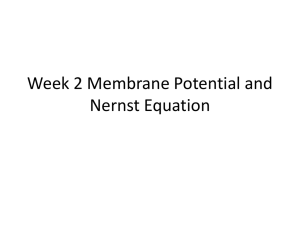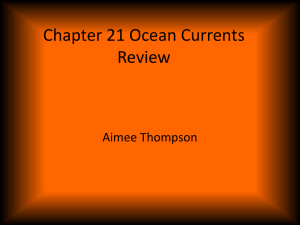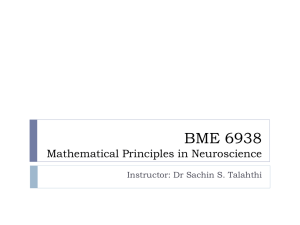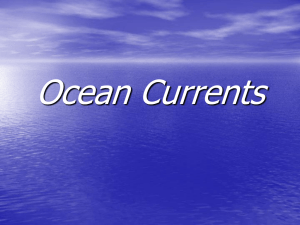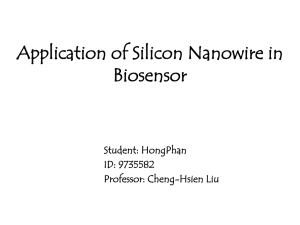Lect5
advertisement
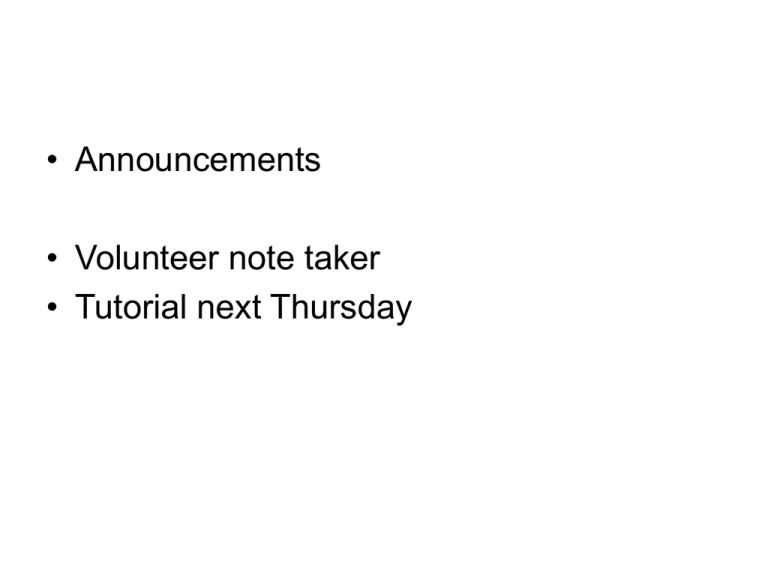
• Announcements • Volunteer note taker • Tutorial next Thursday • Today 1. Action Potential 2. Ionic Basis of Action Potential Action Potentials • What are they? – Rapid reversal of the resting membrane potential 0 mV cell -80 mV 3 ms Electrophysiology Techniques Lolligo pealeii Squid giant axon -1 mm in diameter -1000X larger than most axon Reference electrode Recording electrode stimulus Action Potentials Important concepts: • Threshold • All or none • Regenerative • Conduction along axons Action Potential Rising phase or depolarization 0 mV Overshoot Falling phase or Repolarization Threshold Potential -80 mV Resting membrane potential Undershoot or afterhyperpolarization Reminders… 1. Action potential is a rapid reversal of Vm 2. Vm is dominated by the equilibrium potential of the most permeable ion 3. Permeability controlled by ion channels Ionic Basis of Action Potentials PNa>>PK PK>>PNa PK>>PNa ENa 0 mV -80 mV EK Time Na+ K+ leak channel K+ K+ Membrane Potential Na+ Section of Squid Axon Voltage-gated channels time Membrane Potential Na+ Na+ time K+ K+ 1. At rest only K+ leak channels open, PK>>PNa 2. With stimulus, voltage-gated Na channels open, PNa>>PK Na+ flows into the cell carrying positive charge 3. Delayed opening of voltage-gated K channels, PK>>PNa K+ flows out of cell removing positive charge Na+ Na+ K+ K+ How do we know Na+ important for depolarization? Replace Na+ in extracellular bath with impermeable cation - choline Normal 0 mV -80 mV Low Sodium Ion currents underlying the AP • Use voltage-clamp technique to measure currents • Measure currents in the presence and absence of Na+ • What are ionic currents? – So far, voltage (V) – When ions move current (I) – Movement through channel is resistance (R) • Reciprocal is conductance (g) Ohm’s law I=V/R or I=gV Where g = 1 / R • More properly Iion = gion X emfion • Iion is ionic current • gion is ionic conductance • emfion is the electromotive force acting on an ion • emfion = Vm - Eion Total membrane potential Nernst potential for the ion Therefore, Iion gion (Vm Eion ) • gion is controlled by ion channels • If all channels closed, g = 0 and no ions flow • if Vm = Eion then emf = 0, and no ions flow • How are ion currents measured? • Voltage-clamp Electrophysiology Techniques Voltage clamp Control amplifier + Command Signal Squid axon Voltage output Reference electrode Recording electrode Current electrodes Im Current output Membrane currents • Measure ionic currents from squid axon – To determine contribution of Na+ and K+ Measure in normal saline with Na+ and Na+free saline Ion currents underlying the AP Membrane Potential K+ current Na+ free saline outward Ionic Currents inward Total current normal saline Ion currents underlying the AP K+ current Na+ free saline outward Ionic Currents inward Total current outward normal saline Subtract K+ current from total Ionic Currents inward Na+ current Ion currents underlying the AP 1. The Na+ current activates quickly and then inactivates quickly 2. The K+ current activates more slowly and persists longer Ionic Basis of Action Potentials PNa>>PK PK>>PNa PK>>PNa ENa 0 mV EK -80 mV Time Ion currents underlying the AP Membrane Potential Ionic Currents Pk(leak) + Pk(volt) Pk(leak) After-hyperpolarization K+ current • The after hyperpolarization coincides – with the persistent K+ current and absent Na+ current Stimulus & Threshold • The stimulus depolarizes the membrane – Experimentally applied current – Synaptic potential – Receptor potential Threshold • The membrane potential at which Na flowing into the cell exactly equals the K flowing out of the cell • A fraction more stimulus depolarization is required to ‘fire’ an action potential Threshold Potential Larger stimulus Reaches threshold 0 mV -80 mV Small stimulus Below threshold Positive Feedback Na+ entry Increased Na permeability Membrane depolarization The AP is regenerative and displays all-or-none behaviour Why does the AP stop rising? ENa 1. As VmENa, Na+ inflow stops 2. Na+ channels inactivate 3. K+ channels open, K+ outflow starts Refractory Period 1. A second stimulus very soon after the first will not fire an AP (Absolute) 2. With a delay, a second stronger stimulus will cause a small AP (Relative) 3. With longer delay a second AP can be fired Absolute refractory period A B C Relative refractory period Why is there Refractory Period? • The Na channel stays inactivated for a short period of time after it closes Closed Active Open Inactivated Closed Active Summary & Key Concepts 1. The AP is controlled by rapid changes in ionic permeability 2. Permeability is a function of voltagegated ion channels 3. Threshold potential 4. Positive feedback 5. Refractory period has two phases



